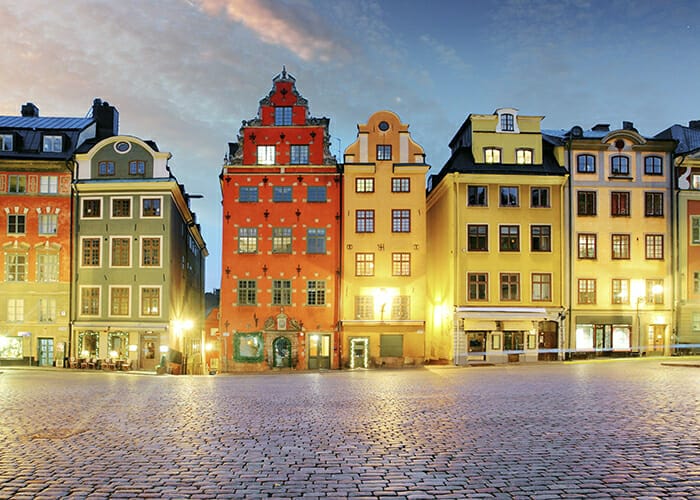This time last year, Sweden’s four buffer funds reported the best returns in their history. Fast forward 12 months, and the four funds have posted losses thanks to allocations to equities and fixed income dragging their portfolios down. It’s left all four funds doubling down on strategies that focus on low costs linked to sophisticated internal management, ESG integration and a keen eye on the long term.
Across all AP Funds, allocations to fixed income and equity suffered most damage, pulled down by high inflation, rising interest rates and war in Ukraine. At SEK421.2 billion ($40.4 billion) AP1, where strategy focuses on robust, active decision-making and a bold risk mandate in a large internally managed allocation, strategy in 2022 focused on pro-actively changing positions including lowering equity exposure and reducing the duration of the fixed income portfolio, said CEO Kristin Magnusson Bernard. AP1 reported a total return of minus 8.6 per cent for the year.
Alternative investments in real estate, infrastructure and private equity funds countered losses in fixed income and equity. Challenging market conditions, particularly the European energy crisis triggered by Russia’s invasion of Ukraine, has had implications for the transition. Magnusson Bernard notes it has resulted in “difficult short-term and long-term trade-offs for societies and corporates”.
Still, like all the AP Funds, AP1 doubled down on sustainability through 2022. For example, one of the components of its new ESG strategy, adopted by the Board in 2021, includes all new investments in private equity should actively contribute to one or more of the global SDGs. In listed equity, the carbon footprint of the portfolio has fallen by 57 per cent since 2019.
AP2
It was a similar picture at SEK407.1 billion AP2 (which reported a loss of -6.7 per cent) where falls in equities and fixed income were also stalled by gains in non-listed assets. Eva Halvarsson, CEO of AP2 noted that despite the turbulent year for both equities and fixed income the portfolio proved more resilient than other indices including OMX Stockholm (which declined by approximately -13 percent during the same period) and MSCI World which fell by approximately -16 per cent.
“Over time, we’ve built our portfolio for situations like the one that arose in 2022,” said Halvarsson. “We’ve placed great value on spreading the risks as far as possible between different types of asset classes and markets, between listed and non-listed assets and between different management models. Our assessment is that, over time, this creates a good and stable return, in line with our long-term mission.”
AP2 has also focused on sustainability, developing new processes to better understand and measure impact. In timberland the fund now invests in line with ten criteria including biodiversity. “This is our latest prioritised focus area within sustainability,” says Halvarsson. The majority of the fund’s timberland investments are in Australia and the USA, in assets that produce saw timber and pulpwood.
AP4
AP4’s bigger loss (-11.9 per cent) left the buffer fund losing its size lead over its three peers, with SEK460.5 billion ($44.1 billion) currently under management compared to SEK527.6 billion ($50.5 billion) a year ago. Equities, which make up 51.7 per cent of the portfolio, where whacked across the board. AP4 has around 17 per cent of its portfolio in alternatives. Elsewhere the portfolio’s CO2 emissions decreased by 3 per cent in 2022 contributing to to a decrease across the whole portfolio of 61 per cent since 2010.
AP3
AP3 ended 2022 with SEK468.4 billion ($44.8 billion) under management and experienced a loss of -5.8 per cent. AP3’s alternative investments returned 8.9 per cent, mainly due to investments in infrastructure and timberland. Elsewhere the fund has focused on developing sustainability goals around corporate governance, climate, human rights, and biodiversity over the last year.
In a recent interview with Top1000Funds.com, Pablo Bernengo, CIO of AP3, explained how the buffer fund is positioned to actively navigate and benefit from volatile markets since a reform process replaced decade-old separate alpha and beta allocations with a traditional asset class structure and appointed new asset class heads.
Long term
Despite the difficult year, all CEO’s see losses in the context of their long-term focus, burnishing long-term return numbers. AP1’s average real return amounts to 5.6 per cent over the past ten years while the fund continues its low expense ratio at 0.06 per cent.
AP4’s Ekvall notes that measured over a slightly longer time perspective, including 2021, AP4’s portfolio has generated a positive result of more than SEK23 billion ($2.2 billion). “If we stretch out the time horizon, to five and ten years, which is more relevant for a long-term investor like AP4, we can report favourable annualised portfolio returns of 6.9 per cent and 9.2 per cent respectively,” he concludes.



